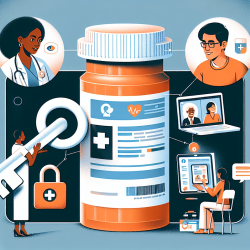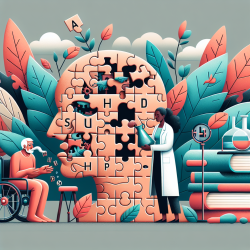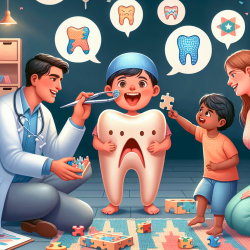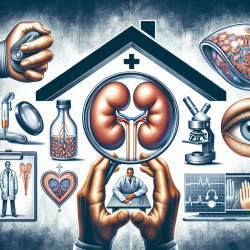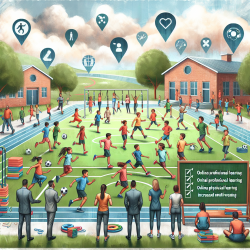Introduction
In the realm of healthcare, the clarity of prescription drug labels is paramount. The research article "Development of a Patient-Centered Bilingual Prescription Drug Label" highlights the critical need for improved prescription labeling to enhance patient understanding and reduce medication errors. This blog post will explore how practitioners can leverage the findings of this research to improve their skills and outcomes for their patients, particularly in the context of speech-language pathology and online therapy services like those provided by TinyEYE.
The Problem with Traditional Prescription Labels
Traditional prescription labels often fall short in terms of readability and comprehension. According to the Institute of Medicine, medication errors are a leading cause of morbidity and mortality in the United States, with poor label design contributing significantly to these errors. The research highlights several issues with traditional labels, including:
- Use of small font sizes and complex language that can be challenging for patients with limited health literacy.
- Inconsistent presentation of critical information such as dosing instructions and drug indications.
- Lack of bilingual options, which poses a significant barrier for non-English speaking patients, particularly within the Latino community.
Introducing Patient-Centered Bilingual Labels
The study introduces a patient-centered bilingual prescription label designed to address these challenges. The label features:
- Plain-language instructions and a larger font size for better readability.
- A 4-time-of-day dosing schedule to clarify medication timing.
- Icons and illustrations to indicate drug purpose and enhance comprehension.
- Instructions available in both English and Spanish to cater to a diverse patient population.
Implications for Practitioners
For practitioners, especially those involved in speech-language pathology and online therapy, understanding and implementing these findings can lead to significant improvements in patient care. Here are some ways practitioners can apply these insights:
- Advocate for Improved Labeling: Encourage pharmacies and healthcare providers to adopt patient-centered bilingual labels that meet regulatory guidelines and improve patient comprehension.
- Educate Patients: Use your sessions to educate patients about the importance of understanding their medication labels. Teach them how to read and interpret the new label formats.
- Collaborate with Pharmacists: Work closely with pharmacists to ensure that the labels provided to your patients are clear and understandable, and address any specific needs they may have.
- Conduct Further Research: Engage in research to explore the effectiveness of these labels in improving patient outcomes and reducing medication errors in your practice setting.
Conclusion
Improving prescription drug labels is a crucial step towards enhancing patient safety and health outcomes. By adopting patient-centered bilingual labels, practitioners can play a pivotal role in bridging communication gaps and supporting patients in managing their medications effectively. As we continue to strive for excellence in healthcare, let us embrace evidence-based practices that prioritize patient understanding and empowerment.
To read the original research paper, please follow this link: Development of a Patient-Centered Bilingual Prescription Drug Label.
